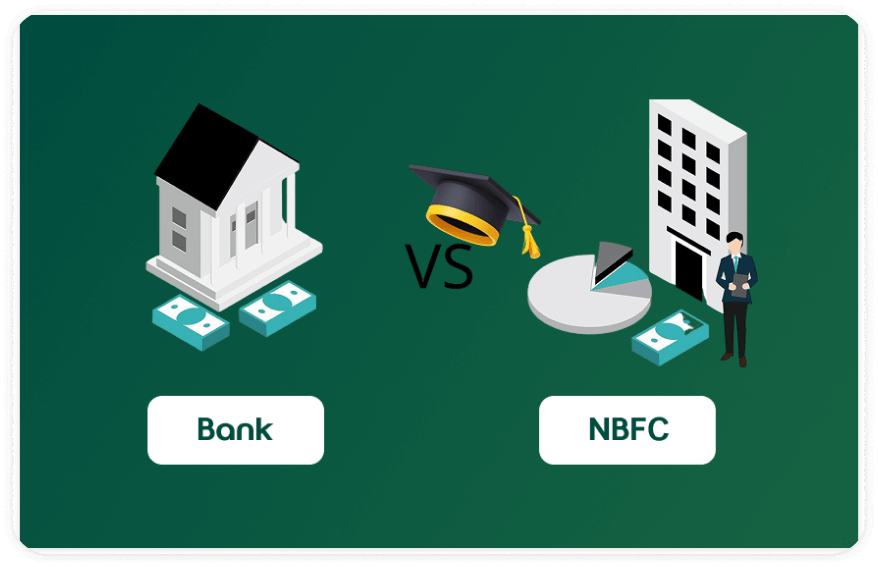Studying abroad is a dream for many students and as we all know, dreams often come with a price tag. While it opens doors to global opportunities and long-term success, it also brings along costs like tuition, living expenses, travel, and insurance. For most families, arranging this amount isn’t easy, and that’s where education loans step in. They help you bridge the financial gap between you and your dream.
It’s an important decision because they work differently, from how quickly your loan gets approved to how much you end up repaying. Banks and NBFCs both offer education loans, but their processes, flexibility, interest rates, and eligibility requirements vary.
In this blog, we’ll breakdown everything from differences to processes and help you make an informed decision.
Understanding the bank vs NBFC difference can have a huge impact on your loan experience. Banks usually offer lower interest rates but come with stricter rules and longer processing times. NBFCs, in contrast, process loans faster and support more courses, but often charge higher interest.
So, if you’re planning to pursue a course, knowing the real Bank vs NBFC pros and cons and the exact bank vs NBFC difference can help you pick the right loan partner.
Banks are especially good if you’re enrolled in traditional, government-approved courses or universities and can afford to wait for their slower processing time.
A government bank offers you lower interest rates but takes longer for loan approval whereas a private bank processes faster loans, but with slightly high interest rates.
NBFCs are a great option when you need your education loan quickly with flexibility. They’re perfect for students applying to unique or foreign courses that banks might not support.
Since most NBFCs don’t ask for collateral or margin money, they’re helpful for students who have a strong academic profile but may not have a solid financial background. The process is faster, and there’s less paperwork, which is a big plus if you’re short of time.
Here are some of the top NBFCs that offer education loans:
If you’re going for an unconventional course or your college isn’t on the government-approved list, NBFCs can be a good option. They approve loans faster and with less paperwork, but just remember, the interest rates are usually higher than the banks.
Now that we’ve learned about the features, benefits of banks vs NBFCs. Here’s a comparison table of Banks vs NBFCs difference for Education Loans to help you understand better.
When it comes to education loans, the bank vs NBFC choice depends on what matters more to you. Banks usually offer lower interest rates but take longer and need more paperwork, while NBFCs are faster and more flexible with course options, though they often come with higher costs.




